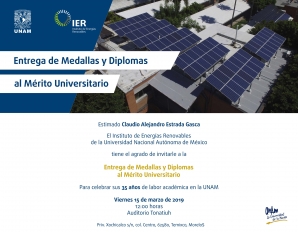H.I., Villafán-Vidales, Abanades, S., Arancibia-Bulnes, C.A., Riveros-Rosas, D., Romero-Paredes, H., Espinosa-Paredes, G., Estrada, C.A.
Abstract
Radiative heat transfer in a 1 kW cavity-type solar reactor devoted to the thermal reduction of compressed ZnO and SnO2 powders is analyzed by a Monte Carlo ray tracing simulation. The developed model takes into account the radiative properties of the reactant particles and of the ceramic cavity walls, as well as the angular intensity distribution of the incoming concentrated solar irradiation. The model also includes the conduction heat losses through the lateral walls and the energy consumed by the endothermic chemical reaction. It is used to predict the temperature and the absorbed flux density profiles on the inner cavity walls for different main features of the reactor, concerning the dimensions of the cavity and the type of reactant. Results show that the absorbed flux density profile and the theoretical thermochemical efficiency change with the cavity aspect ratio and with the oxide reactant. The cavity with an aspect ratio of 3 and a SnO2 pellet undergoing dissociation presents the highest thermochemical efficiency. Additionally, a different configuration of the reactor design is considered, which consists in implementing a layer of reactive particles on the inner lateral cavity wall. The model highlights that this type of reactor operation with a reactant layer on the lateral cavity wall results in an improved thermochemical efficiency.

